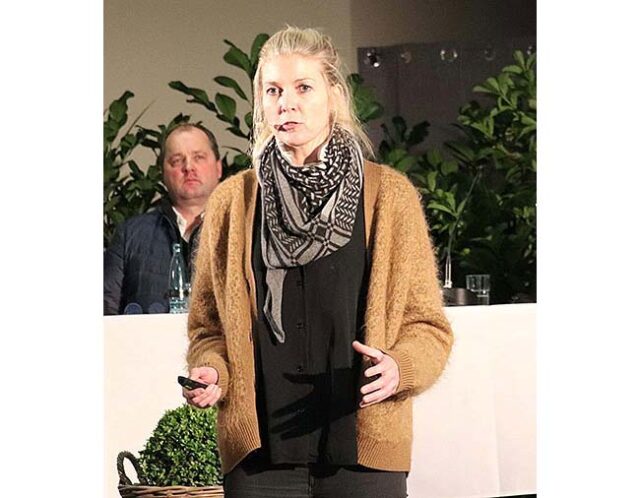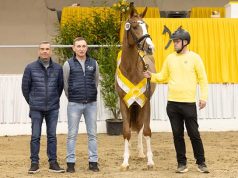By Désirée Dahn / Holsteiner Verband
Photography: Holsteiner Verband
In December, the Holsteiner Verband hosted a special evening. In the foyer of Fritz-Thiedemann-Halle and in a virtual room, via livestream on the Verband’s website, an interactive seminar was held. The focus was on modern reproduction techniques, with a panel discussion to follow.
“We at Holsteiner Verband think it is important to give as much information as possible on the various techniques to our breeders and interested people to enable breeders later to decide for themselves which method to choose for their mares in the future,” said managing director Norbert Boley prior to the event. During the evening it became obvious that the desire to know more about the various ways was as large as sometimes the insecurity of the participants.
Due to the Covid situation, space had been limited but all available seats were taken and around 400 listeners followed the livestream on the Net. The lectures turned interactive because visitors on the Net could post their questions in a chat forum. Christoph Rowold as the moderator observed the chat and forwarded the questions.
The speakers were Jannie Spanner of VetEmbryo in Denmark, Michaela Kölling of Vet Art in Dägeling, and Dr. Christiane Müller (the national federation FN’s commissary for animal protection). The podium included Neel-Heinrich Schoof (deputy breeding manager of the Trakehner Verband), Henrik Klatte (Zuchthof Klatte), Professor Dr.sc.agr. Dr. h.c. mult. Ernst Kalm (former professor and director of the Institut für Tierzucht at the Agrar- und Ernährungswissenschaftlichen Fakultät in Kiel), and Olaf Rörden (Hof am Sylvert).
How do the various methods work? ET?
Embryo transfer is a widely used technique: Several days after insemination the embryo is flushed from the donor mare and transferred to a carrier mare who will go through the pregnancy and rear the foal. Michaela Kölling of VetArt at Dägeling is an expert in this technique. “That is how mares in sport could have a foal as well, dams with very good heritability could have several offspring per year, and the interval between generations could be shorted by using two-year-old mares,” she emphasized the advantages. Furthermore, breeding would be possible for valuable mares who cannot be expected to go through a pregnancy (for instance because of an injury).
However, the disadvantages in ET were also explained: “Hormonal interference for the donor and carrier mare could be higher compared to OPU and ICSI because the cycles of both mares have to be synchronized,” Kölling said. Breeders need to be aware that the transfer of an embryo is possible only within a certain time frame when mares are in heat (roughly from March until October). In Kölling’s experience, a donor mare’s drop in sport performance feared by some riders or owners is rather rare. The retrieval rate – i.e. the success of using this method – is between 40% and 60%. It is, however, very individual and depends on several factors (mare’s age, health status, semen quality, etc.) Even when an embryo has been produced, the chances of it lodging in the carrier mare is between 70% and 80%... To read the complete article you need to be a subscriber
CLICK HERE TO SUBSCRIBE TO BREEDING NEWS
SUBSCRIBERS CAN READ THE COMPLETE ARTICLE BY LOGGING IN AND RETURNING TO THIS PAGE




